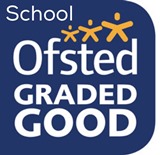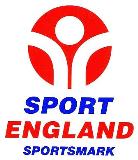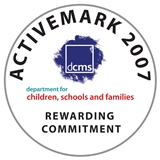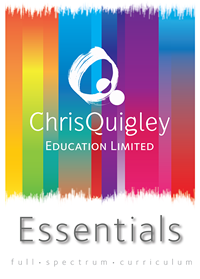COMPUTING
INTENT
At Larwood School we aim to provide a high-quality computing curriculum which will provide children with the digital literacy likely to be required in the future workplace and which will enable them to become increasingly active participants in an ever-changing digital world.
Computing is a subject which has links with every area of the curriculum, but especially with mathematics, science and design and technology. Our aim is to make these links clear and to teach and promote the type of thinking that enhances learning in all subjects as well as giving an improved understanding of natural and artificial systems.
Through the computer science strand of computing, children will learn computational thinking which involves abstraction, logic, the understanding of algorithms and the manipulation of data, and this in turn will allow children to analyse problems and will give them the opportunity to solve them through creating computer programmes.
 Through the information technology strand, children will experience a wide range of applications and software on a range of hardware and gain a basic understanding of how technology works. They will gain the experience necessary to enable them to choose the best combinations of hardware and software to solve problems and complete tasks, as well as to enable them to evaluate and use new or unfamiliar technologies.
Through the information technology strand, children will experience a wide range of applications and software on a range of hardware and gain a basic understanding of how technology works. They will gain the experience necessary to enable them to choose the best combinations of hardware and software to solve problems and complete tasks, as well as to enable them to evaluate and use new or unfamiliar technologies.
To develop their digital literacy, children will be taught to use technology safely, respectfully, and responsibly, understanding the risks relating to online behaviours as well as understanding how their own behaviour might affect others. We want all children to leave our school knowing what to do and where to go for help should they encounter anything worrying, upsetting or inappropriate when using technology, and being aware of a range of legal and ethical issues relating to computing.
IMPLEMENTATION
We use iCompute resources to teach the primary computing curriculum with inspirational, creative, schemes of work that provide full statutory coverage of the National Curriculum for Computing at Key Stage 1 and Key Stage 2. This is delivered following the Chris Quigley essentials framework - The curriculum builds skills and knowledge in a clear progression as the children move through the school, through age-appropriate lessons and activities which are differentiated to meet the needs of individuals where necessary.
Computer science largely involves learning to program and is therefore often taught in discrete lessons, although these

are normally be linked to the general topic and linked to literacy through the genre of instructions. As children move through the school, they will learn about how to give instructions through algorithms. They will learn that instructions must be precise, unambiguous and error free as they start to write and debug simple programmes. They use programmes such as Scratch to develop increasing precision and control and to learn to evaluate and improve what they have done. They will look at programmes and predict what they will do when run. By the time children leave the school, they will have had the opportunity to control and adapt physical or simulated systems and create a simple video game.
Information technology is taught through all curriculum subjects with teachers taking advantage of opportunities to plan for the use of technology wherever it is appropriate.  As they progress through the school, they use Chromebooks, to access a wide variety of software and applications which enable them to purposefully create, organise, store, manipulate and retrieve digital content. Each child will have the opportunity to work on and with digital images, movies, text, spreadsheets, audio recordings, music, and animations. They produce mixed media documents for publishing in hard copy for display, or for publishing online, which show an awareness of purpose and audience as well as good design principles. They learn how to use emails and other forms of online communication safely. During Year 5, children focus on how information technology is used in the business world, using it to create advertisements in different media for example.
As they progress through the school, they use Chromebooks, to access a wide variety of software and applications which enable them to purposefully create, organise, store, manipulate and retrieve digital content. Each child will have the opportunity to work on and with digital images, movies, text, spreadsheets, audio recordings, music, and animations. They produce mixed media documents for publishing in hard copy for display, or for publishing online, which show an awareness of purpose and audience as well as good design principles. They learn how to use emails and other forms of online communication safely. During Year 5, children focus on how information technology is used in the business world, using it to create advertisements in different media for example.
The teaching of digital literacy is integrated throughout the computing and wider curriculum, but aspects of it are brought to the forefront during e-safety days which are usually school-wide. Displays of children’s work about online safety, for example, are provided around the school to raise the profile of the issues covered and related discussions and activities are included in the PSHE curriculum.
The curriculum lead (ADHT) role is to ensure that the learning is coordinated throughout the school and that there is a clear progression of skills and knowledge. The leader is available to provide subject knowledge support to other members of staff, if necessary, as well as to provide resources and materials to help with planning. Meetings and discussions are held, and observations of lessons and scrutiny of work takes place, to ensure that the planning and teaching results in the desired outcomes for the children.
IMPACT
The high-quality computing education which is received at Larwood School is designed to produce children who are confident, competent and responsible in their use and understanding of technology, and who will be able to adapt to a world of change throughout their lives. Success will be shown by the number of children who progress well and reach the age-related expectations for computing in each year. This can be assessed through regular scrutiny of the work they produce, looking at images and videos of practical work, pupil conferencing (which gives children the opportunity to discuss and feedback about their work, prove that they can talk knowledgeably using appropriate vocabulary, as well as demonstrate enthusiasm for the subject), marking of work against set criteria, moderation of quality and level of the work between year groups and within the year groups and an annual report of standards across the computing curriculum.








